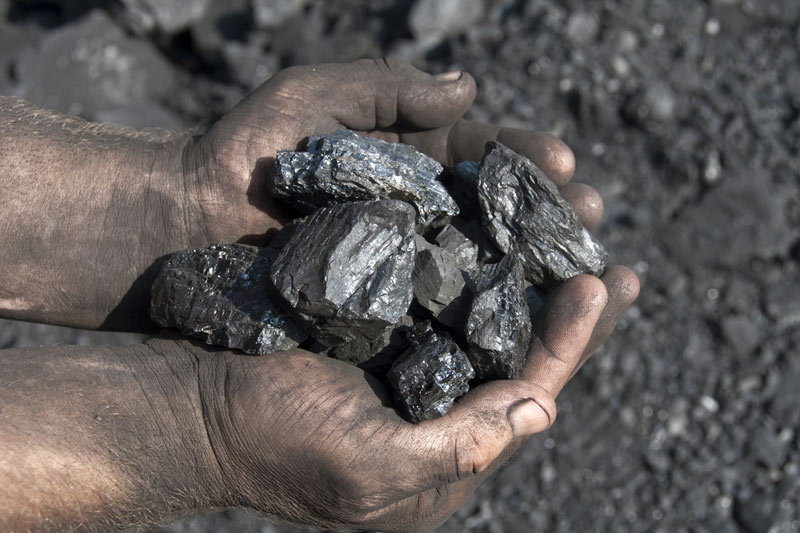(Repeats with no changes to text)
By Clyde Russell
LAUNCESTON, Australia, Aug 15 (Reuters) - If you believe that thermal coal's rally this year has been largely on the back of rising Chinese imports, it follows that any sign of moderation in demand in the world's biggest buyer would raise a red flag of caution.
That banner may be in the process of being hoisted, with shipping data suggesting August imports of the fuel used mainly for power generation may be the lowest for six months.
Ship-tracking data compiled by Thomson Reuters Commodity Research and Forecasts estimate that 13.07 million tonnes of coal will arrive in China in August, down substantially from the 18.92 million tonnes in July, which was the most so far this year.
It's worth bearing in mind that the August figure will likely rise somewhat over the next few days, as ships leaving Indonesia will still have time to reach China by the end of the month.
It's possible that some vessels could still depart from Australian ports and make China by the end of August, but they would have to leave by today and steam faster than normal, as the usual voyage time from Newcastle port, the world's largest export harbour for thermal coal, to southern China is around 18 days.
It's also worth noting that the Thomson Reuters data doesn't exactly match up with Chinese customs data, largely because the Thomson Reuters data is for seaborne coal imports and therefore excludes rail and truck cargoes from countries such as Mongolia and North Korea.
But even allowing for some more cargoes to be added into the August arrivals, it does appear likely that China's seaborne imports will drop substantially in August, possibly by as much as 5 million tonnes from July's figure.
If this is the case, it will hardly be positive for the main Asian coal price benchmarks, which have enjoyed strong gains this year.
The Newcastle Weekly Index GCLNWCWIDX , the main thermal coal marker, has rallied almost 42 percent since its year-low in late January to end last week at $67.13 a tonne, while ICE Newcastle futures NCFMc1 have surged 41 percent over the same period.
The futures curve for the ICE contracts 0#NCFM: also suggest that Newcastle coal won't suffer steep declines, with the December contract at $63.15 a tonne and August 2017 at $64.70, both only slightly below the close of $68.30 on Aug. 12.
CAN CHINA IMPORTS CONTINUE TO SURPRISE?
However, much will depend on whether China's imports of coal continue to surprise to the upside, as they have done so far this year.
Customs data show total coal imports of 129.2 million tonnes in the first seven months of the year, a gain of 6.7 percent over the same period last year.
Thomson Reuters Commodity Research and Forecasts have pegged seaborne imports at 123.6 million tonnes in the year to end August, up 3.2 percent from the 119.8 million recorded for the same period in 2015.
This rate of growth, while still positive, is down from 5.2-percent growth in the first seven months of this year compared to the same period in 2015.
Although too early to call a definitive trend, if final numbers do confirm weakness in China's coal imports in August, it will call into question the sustainability of the rally in coal prices.
India, the world's second-largest coal importer, is also unlikely to have increased imports in August, with vessel-tracking data forecasting the arrival of 13.96 million tonnes in August, down from 17.14 million in July.
Again, the August figure may rise slightly in coming days as both cargoes leaving from Indonesia and South Africa could still make it to the South Asian nation by the end of the month if they sail by the end of this week.
But even if a surge of cargoes does materialise in the next few days, it's still unlikely that India will record an increase in coal imports in August from July.
India's coal imports in the first eight months of the year are also likely to be lower than for the same period in 2015, with Thomson Reuters data showing 134 million tonnes arriving by the end of August, down 3.8 percent from the 139.3 million recorded in the January to August period last year.
What the market will have to decide is how well a 40-percent rally in coal prices sits with a much more modest, single-figure gain in Chinese imports and a decline in Indian purchases.
<^^^^^^^^^^^^^^^^^^^^^^^^^^^^^^^^^^^^^^^^^^^^^^^^^^^^^^^^^^^ GRAPHIC on of India vs China seaborne coal imports:
http://tmsnrt.rs/2bgIer1
^^^^^^^^^^^^^^^^^^^^^^^^^^^^^^^^^^^^^^^^^^^^^^^^^^^^^^^^^^^> (Editing by Joseph Radford)
